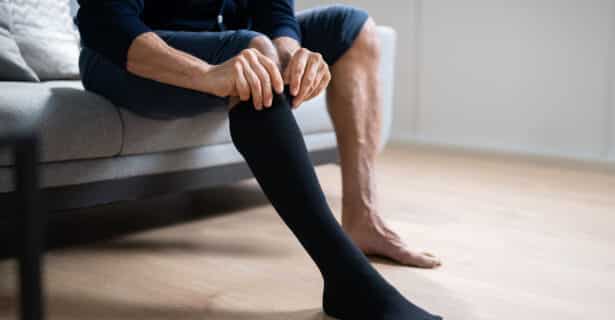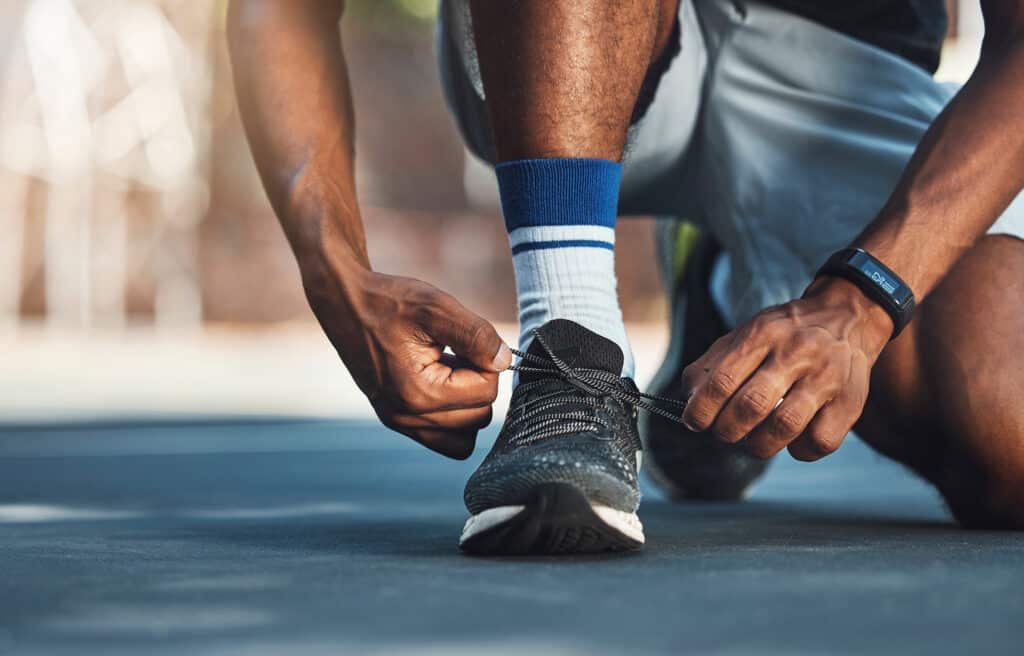
Foot Care
Foot Care and Exercise
Diabetes can cause nerve damage and poor blood flow to your legs and feet. These issues make it more likely that you will get sores or blisters on your feet.
Sores and blisters make walking uncomfortable, and some will get worse with walking. If you have an open sore or blister on your foot, change to a low-impact or non-weight bearing exercise while the wound heals. Sores and blisters take longer to heal when you are living with diabetes.
Wait until your sores and blisters heal before you start your walking program or they could get much worse. Talk to your podiatrist or chiropodist. These two professionals are specialists in foot care.
Take Care of Your Feet
Follow a foot care routine in order to maintain healthy skin:
- Check your feet and legs daily. Use a mirror if you are unable to see certain parts of your feet.
- Schedule regular care for your nails.
- Wear shoes and socks that fit well. Make sure the seams do not press put pressure on your skin.
- Apply moisturizing lotion, as needed.
- Tell your doctor if your foot changes colour in any area, if it feels warmer than usual, or if it has dark spots, sores, swelling, redness, or pain.
What Shoes Do I Wear?
Use running shoes for your exercise. Do not use cross trainers, court shoes, or walking shoes. Running shoes are more stable and have cushioning and support. Before you buy running shoes, ask a professional or qualified salesperson to check your feet and the way you walk.
Here are a few shoe shopping tips to help make sure your shoes fit well:
- Shop for shoes during the middle of the day because your feet naturally expand due to swelling and activity.
- Try different models of shoes.
- Make sure you have 1 cm (or a half inch) of space between your longest toe and the end of the shoe. This extra space allows for swelling when you exercise. If the shoes are too tight, you can get blisters, sores, and bruises.
- Wear your shoes indoors for 1 to 2 weeks to help you know if it’s the right shoe for you. If it’s not, return the shoe and choose a different model or size.

Running shoes last 6 to 12 months or for about 800 kilometres (km) (about 500 miles).
What Socks Do I Wear?
- Wear socks without seams on the inside. If you socks have seams, you can turn them inside out. Seams can lead to rubbing, blistering, and foot ulcers.
- Buy socks made of synthetic materials (such as polyester) to help take moisture away from your feet. Diabetic socks or usual sport socks help control the moisture.
- Cut the top elastic off of yours socks so it doesn’t press into your skin.
- Light coloured socks can help you find wounds on your feet by showing the blood from blisters.
Tip: Check your feet for wounds when you change your socks.